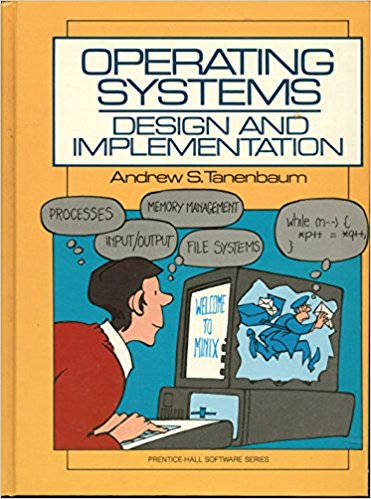| Andrew Tanenbaum Gains ACM Award |
| Written by Sue Gee | |||
| Friday, 28 June 2024 | |||
|
Andrew Tanenbaum has been awarded the 2023 ACM System Software Award for MINIX the operating system he created for teaching purposes and which was an important influence on Linux.
The Association for Computer Machinery (ACM) is the world's foremost professional membership organization for computing. Among its annual awards the Turing Award is the best known, and with a prize of $1 million the most lucrative, but there are many more. The ACM System Software Award is one of the ACM's prestigious technical awards, where recipients are selected by their peers. It carries a prize of $35,000, with financial support from IBM and is: awarded to an institution or individual(s) recognized for developing a software system that has had a lasting influence, reflected in contributions to concepts, in commercial acceptance, or both. The latest recipient of this award, is Andrew S. Tanenbaum of Vrije Universiteit, Amsterdam in the Netherlands recognized for MINIX: which influenced the teaching of Operating Systems principles to multiple generations of students and contributed to the design of widely used operating systems, including Linux. It was at Vrije University in Amsterdam that Tanenbaum created Minix as a small educational operating system. It was a small microkernel-based UNIX operating system for the IBM PC in only 12,000 lines of C code. In addition to the microkernel it included a memory manager, file system and core UNIX utility programs. It was, as intended, the perfect companion to the textbook, “Operating Systems: Design and Implementation.”
In hindsight, the problem with it was that it was intended for educational purposes and the book publisher, Prentice-Hall wasn't prepared to allow the source code to be freely copied and used. The licence, which cost $69, was restricted and it wasn't clear what would happen if you dared to develop it and make it available. If Minix had been open source it probably would have killed the Linux project. Instead its licensing terms contributed to the popularity of Linux As a student at Finland's University of Helsinki, Linus Torvalds, had learned about MINIX from Tanenbaum's book and at the beginning of 1991, having decided to write his own operating system bought a 386-based PC clone, installed a copy of Minix and started work on what would become Linux. Torvalds acknowledges the debt Linux owes to MINIX and despite some harsh criticisms of each others OS architecture in the written exchange dubbed the Tanenbaum-Torvalds debate in 1992, in which Tanenbaum argued that microkernels are superior to monolithic kernels,the two individuals are on amicable terms. As a microkernel operating system MINIX was the basis for the MeikOS operating system for Meikotransputer-based computers which ran inside popular microchips. A later version of MINIX, MINIX 3.0 was intended for resource-limited and embedded computers and for applications requiring high reliability and in 2017 we learned, due to a fault being discovered, that every Intel chipset since 2015 is running actually running MINIX 3, even if it is also running Windows, Linux or OSX as well. This meant that MINIX could properly be regarded as the world's most used operating system. For this story, see Minix Inside!
More InformationRelated ArticlesTo be informed about new articles on I Programmer, sign up for our weekly newsletter, subscribe to the RSS feed and follow us on Twitter, Facebook or Linkedin.
Comments
or email your comment to: comments@i-programmer.info <ASIN:B01FEKI840> |
|||
| Last Updated ( Friday, 28 June 2024 ) |




